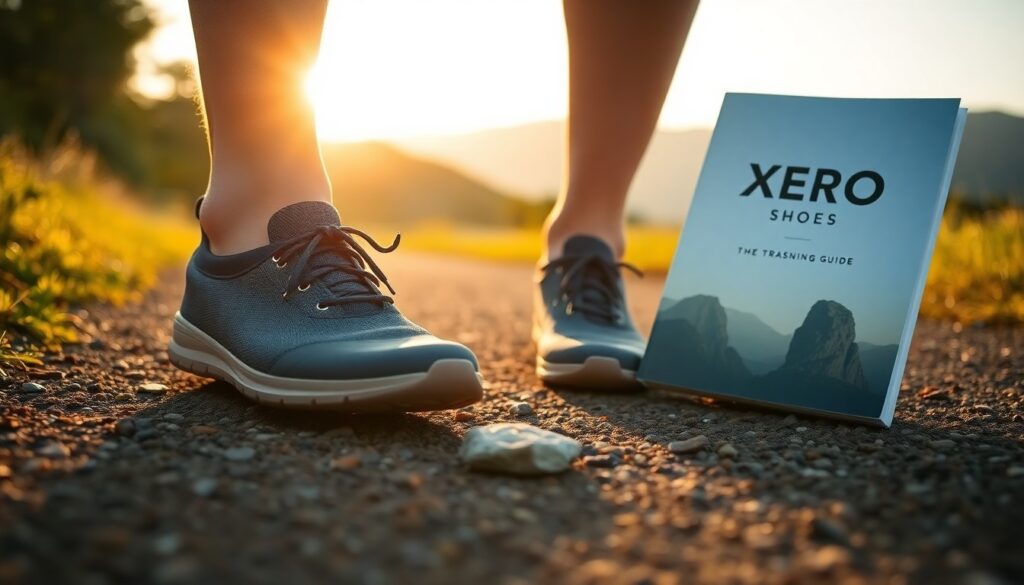
Guide yourself into the world of barefoot shoes with confidence as you explore Xero Shoes, a revolutionary minimalist footwear experience. Your journey begins with understanding that transitioning gradually prevents potential foot and muscle strain. Think of this process as training wheels for your feet – start slow, build strength, and embrace the natural movement potential. By choosing Xero Shoes, you’re not just selecting footwear; you’re investing in a biomechanically intelligent approach to walking and running that reconnects you with your body’s innate movement patterns. Whether you’re an athlete, casual walker, or fitness enthusiast, this comprehensive guide will help you navigate your transition safely and effectively.
Understanding Barefoot Footwear
Before entering into Xero Shoes, you’ll want to understand the fundamental philosophy behind barefoot footwear. Barefoot shoes represent a radical departure from traditional cushioned footwear, designed to mimic the natural movement and sensory experience of walking without shoes. They allow your feet to move and function as nature intended, providing minimal interference between your feet and the ground.
Definition of Barefoot Shoes
Barefoot shoes are minimalist footwear engineered to simulate the experience of walking or running barefoot while providing protection from surface elements. These shoes feature ultra-thin soles, zero heel-to-toe drop, and a wide toe box that enables your toes to spread naturally, promoting better balance and foot mechanics.
Benefits of Barefoot Walking and Running
Against conventional footwear wisdom, barefoot-style shoes offer significant biomechanical advantages. They encourage natural foot positioning, strengthen intrinsic foot muscles, improve proprioception, and potentially reduce injury risks associated with traditional supportive footwear.
Another compelling aspect of barefoot walking and running is the potential for enhanced sensory feedback and improved overall foot health. By allowing your feet to move more naturally, you can develop stronger foot muscles, better arch support, and increased flexibility. This approach can help correct movement patterns and potentially alleviate chronic pain issues related to improper foot mechanics.
Overview of Xero Shoes
Before exploring Xero Shoes specifically, understand that they represent a leading brand in minimalist, barefoot-inspired footwear. Founded by passionate advocates of natural movement, Xero Shoes offers a range of products designed to provide foot protection while maintaining maximum sensory connection with the ground.
In addition to their core philosophy, Xero Shoes distinguishes itself through innovative design and commitment to natural movement principles. Their product line includes everything from lightweight running shoes to casual everyday wear, all engineered to support your foot’s natural biomechanics and promote a more authentic walking and running experience.
Why Transitioning Gradually Is Essential
Some barefoot shoe transitions require careful planning to protect your body from potential strain. When you switch to Xero Shoes, your feet and muscles need time to adapt to a more natural movement pattern. Gradual adaptation prevents injury and allows your body to develop the strength and flexibility needed for minimalist footwear.
Risks of Abrupt Change
Transitioning too quickly to barefoot running shoes can lead to potential injuries like stress fractures, tendonitis, and muscle strains. Your body has been conditioned to traditional supportive footwear, and an immediate switch can shock your musculoskeletal system.
Muscle Activation and Soreness
Gradually introducing Xero Shoes activates muscle groups in your feet and legs that have been dormant. You’ll experience new sensations as underused muscles become engaged, potentially causing initial discomfort and mild soreness.
Muscle Activation and Soreness (Extended)
Risks associated with muscle reactivation include temporary discomfort in your calves, Achilles tendon, and foot arches. Your body is learning to move more naturally, engaging stabilizing muscles that traditional shoes typically suppress.
Importance of Adaptation Time
Behind every successful barefoot shoe transition is a strategic approach to adaptation. You’ll need patience and mindfulness to allow your body to adjust to the new biomechanical demands of minimalist footwear.
Importance of Adaptation Time (Extended)
This period of adjustment is critical for developing proper movement patterns and building foot strength. Your body will gradually recalibrate, improving proprioception and natural gait mechanics with consistent, progressive use of Xero Shoes.
Key Concepts in Biomechanics
Your understanding of biomechanics is vital when exploring barefoot shoe technology. Biomechanics explores how your body moves, focusing on the intricate interactions between muscles, bones, and joints during motion. By comprehending these fundamental principles, you’ll gain insights into how minimalist footwear can potentially transform your movement patterns and overall physical performance.
Natural Foot Movement
Along the journey of understanding barefoot shoe mechanics, natural foot movement emerges as a critical concept. Your feet are designed with complex muscular and skeletal structures that enable dynamic, adaptive motion when unrestricted by traditional rigid footwear. Xero Shoes facilitate this biomechanical freedom, allowing your feet to move as nature intended.
Impact on Joint Health
Joint stress reduction becomes a significant consideration when transitioning to minimalist footwear. Your body’s natural shock absorption mechanisms can be enhanced by allowing more responsive foot mechanics, potentially mitigating long-term joint strain associated with conventional shoe designs.
It’s important to recognize that barefoot shoe transition requires gradual adaptation. Your joints undergo significant biomechanical recalibration, with potential benefits including improved proprioception, reduced impact forces, and more balanced weight distribution. By promoting natural alignment, these shoes can potentially decrease cumulative stress on knees, hips, and lower back.
Role of Foot Strength and Flexibility
Role of muscular engagement distinguishes minimalist footwear from traditional shoes. Your foot muscles activate more comprehensively, developing strength through increased sensory feedback and unrestricted movement patterns.
Plus, foot strength development represents a holistic approach to lower limb wellness. Your intrinsic foot muscles, often weakened by conventional footwear, can be progressively rehabilitated. Barefoot shoe technology encourages natural muscle activation, potentially improving balance, proprioception, and overall lower extremity biomechanical efficiency.
3-Phase Transition Plan (12 Weeks)
To successfully transition to Xero Shoes, you’ll need a strategic 12-week approach that gradually adapts your feet and body to barefoot shoe mechanics. This methodical plan helps you build foot strength, improve biomechanics, and minimize potential discomfort during your minimalist footwear journey.
Phase 1 (Weeks 1–4): Initial Introduction
Any transition begins with understanding your current foot condition and introducing minimal footwear principles. You’ll start by wearing Xero Shoes for short indoor periods, performing gentle foot-strengthening exercises, and allowing your body to adjust to the new sensory feedback from a zero-drop, wide toe box design.
Phase 2 (Weeks 5–8): Gradual Deepening
Phase two involves increasing your barefoot shoe exposure and challenging your foot’s adaptability. You’ll progressively extend wear time, incorporate light outdoor walking, and focus on developing natural foot mechanics.
Phase two represents a critical adaptation period where your muscles, tendons, and proprioceptive systems recalibrate. You’ll experience increased foot flexibility, improved balance, and a more natural gait pattern as your body learns to move without traditional shoe constraints.
Phase 3 (Weeks 9–12): Full Integration
On reaching this phase, you’ll integrate Xero Shoes into most daily activities, experiencing enhanced foot strength and movement efficiency. Your feet will have developed significant resilience and adaptability to minimalist footwear.
Due to consistent training, you’ll now possess significantly improved foot biomechanics, reduced risk of injury, and a more intuitive connection with ground surfaces. Your barefoot shoe transition transforms from a deliberate process to a natural, comfortable experience.
Strengthening Exercises for Transitioning
Importance of Conditioning the Feet
Transitioning to barefoot shoes requires gradual foot muscle adaptation. Your feet have been confined in traditional shoes, weakening intrinsic muscles. By slowly introducing minimalist footwear, you’ll rebuild natural foot strength and proprioception, preventing potential injuries during the transition process.
Recommended Exercises
An effective set of exercises includes toe spreads, heel raises, arch lifts, and barefoot walking. Barefoot mobility drills will help you develop foot flexibility and strengthen the muscles that have been dormant in conventional shoes. Focus on controlled, deliberate movements to maximize muscle engagement.
Hence, a comprehensive exercise routine should incorporate specific movements targeting foot intrinsic muscles. Exercises like marble pickup, towel scrunches, and balance work on unstable surfaces can significantly enhance foot strength and neuromuscular control. You’ll progressively develop the resilience needed for minimalist footwear.
Timing and Frequency for Optimal Results
About 15-20 minutes of targeted foot exercises, 3-4 times weekly, will yield substantial improvements. Start with gentle movements and gradually increase intensity as your foot strength develops. Consistency is key in your barefoot shoe adaptation journey.
In addition to structured exercises, integrating barefoot activities like walking on different surfaces, yoga, and gentle stretching will accelerate your foot’s conditioning. You’ll notice improved balance, flexibility, and natural foot mechanics as you progress through your minimalist footwear transition.
Common Challenges and How to Overcome Them
Not all transitions to Xero Shoes barefoot footwear are smooth sailing. You’ll encounter some initial hurdles that might test your resolve, but understanding these challenges prepares you for a successful adaptation. Your body needs time to recalibrate to a more natural walking and running experience, so patience and gradual progression are key to overcoming potential discomfort and building foot strength and mobility.
Calf Tightness and Remedies
Common calf tightness occurs when you first switch to minimalist shoes due to different muscle engagement. You’ll want to incorporate gentle stretching, foam rolling, and progressive walking distances to help your muscles adapt to the new biomechanical demands.
Foot Fatigue Strategies
Along the transition path, you might experience foot fatigue as your intrinsic foot muscles strengthen. Start with short walks, gradually increasing duration, and consider alternating between traditional and barefoot shoes during the initial weeks.
Challenges in foot adaptation require a strategic approach. You’ll need to progressively build foot strength through specific exercises like toe spreads, arch lifts, and barefoot walking on varied surfaces. Listening to your body’s signals and avoiding overexertion will help you develop resilience and prevent potential injuries.
Skin Sensitivity and Proper Care
Along with muscle adaptation, you might encounter skin sensitivity when transitioning to thinner, more flexible footwear. You’ll benefit from using moisture-wicking socks and gradually exposing your feet to different textures and terrains.
And skin care becomes paramount in your barefoot shoe journey. You’ll want to monitor your feet for any hotspots, blisters, or unusual wear patterns, using natural moisturizers and allowing adequate recovery time between extended wear sessions. Proper foot hygiene and gradual exposure will help you build robust, resilient feet.
Understanding Foot Biomechanics
Many traditional shoe designs have fundamentally misunderstood how human feet naturally function. By exploring foot biomechanics, you’ll discover how your feet are designed to move, flex, and absorb impact with incredible sophistication. Understanding these intricate mechanisms helps you appreciate why minimalist barefoot shoes like Xero can transform your walking and running experience.
Natural Foot Shape and Function
At the core of foot biomechanics, your foot is a complex network of 26 bones, 33 joints, and over 100 muscles, tendons, and ligaments. These interconnected structures are engineered for dynamic movement, providing stability, shock absorption, and propulsion. When allowed to function naturally, your feet can adapt, strengthen, and support your body’s entire kinetic chain with remarkable efficiency.
Effects of Traditional Footwear
Behind most conventional shoes lies a design that restricts natural foot movement. Thick cushioning, narrow toe boxes, and rigid soles fundamentally alter your foot’s biomechanical potential. These shoes can weaken foot muscles, reduce sensory feedback, and create artificial movement patterns that disconnect you from your body’s innate walking and running mechanics.
Even more concerning, traditional footwear can lead to long-term structural changes in your feet. Prolonged use of restrictive shoes can cause muscle atrophy, reduced toe flexibility, and altered arch dynamics. The padding and support paradoxically weaken the very structures they’re designed to protect, creating a cycle of dependency on increasingly supportive footwear.
Implications for Running and Walking
One significant revelation in foot biomechanics is how natural movement impacts your entire kinetic chain. When you allow your feet to move authentically, you engage more muscle groups, improve proprioception, and potentially reduce injury risks associated with unnatural movement patterns.
Effects of transitioning to minimalist footwear extend far beyond your feet. Improved biomechanical alignment can positively influence your posture, reduce joint stress, and enhance overall movement efficiency. By gradually retraining your feet and lower body, you’re vitally rewiring your movement patterns to be more natural, responsive, and biomechanically intelligent.
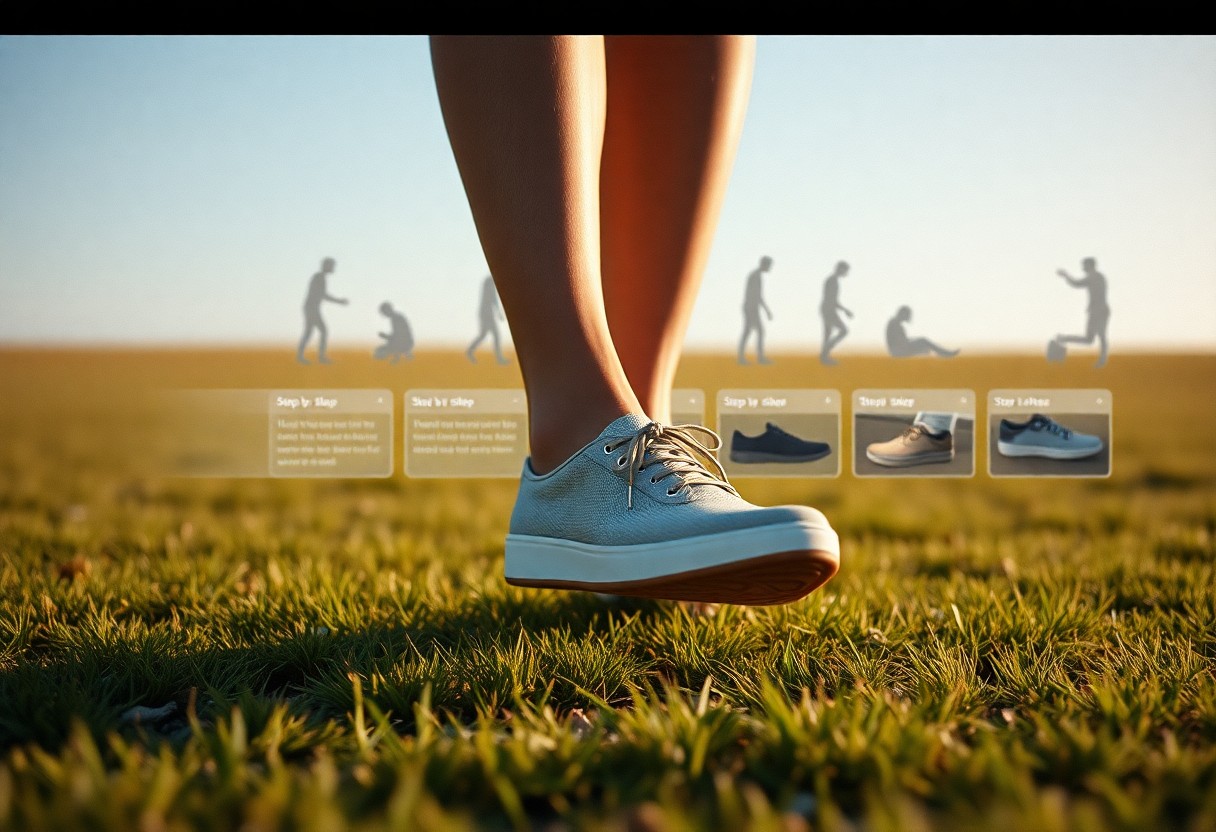
Choosing the Right Xero Shoes
Despite the wide range of barefoot footwear options, Xero Shoes offers a unique approach to minimalist running and walking. Your journey begins with understanding their diverse lineup and finding the perfect match for your specific needs and activity level. These lightweight, flexible shoes are designed to mimic natural foot movement, providing an authentic barefoot experience while protecting your feet from rough terrain.
Different Models and Their Features
Models in the Xero Shoes collection range from trail runners to casual everyday wear, each engineered with zero-drop design and ultra-thin soles. The Prio model excels for cross-training, while the TerraFlex offers superior trail performance. Each shoe incorporates barefoot technology that allows maximum foot flexibility and sensory feedback during movement.
Factors to Consider for Beginners
The key considerations for transitioning to Xero Shoes include:
- Foot strength assessment
- Current fitness level
- Running/walking terrain
- Personal comfort preferences
- Intended activity type
The ultimate goal is finding a shoe that supports your natural biomechanics.
Customization Options
Any Xero Shoes model can be personalized to enhance your barefoot experience. You can adjust lacing techniques, select different insole thicknesses, and choose color variations that reflect your personal style while maintaining optimal foot function.
Success Stories: Real-Life Experiences
After exploring numerous personal journeys, we’ve discovered inspiring transformations from individuals who successfully transitioned to barefoot shoes. These stories highlight the potential benefits of Xero Shoes, demonstrating how gradual adaptation and proper technique can lead to improved foot strength, natural movement, and overall comfort. Each narrative provides valuable insights into the transformative power of minimalist footwear.
Case Study 1: A Beginner’s Journey
With determination and patience, Sarah, a recreational runner, embraced her Xero Shoes transition. She started by walking short distances, gradually increasing her barefoot training time. Her foot muscles developed strength, and she noticed improved proprioception and reduced joint stress during her running sessions.
Case Study 2: Overcoming Common Issues
Journey towards barefoot running isn’t without challenges. Mike experienced initial discomfort and muscle soreness but persevered through strategic adaptation. He implemented gradual mileage increases and focused on proper running technique.
It takes time to adjust to minimalist footwear. Mike incorporated specific strengthening exercises, used transitional shoes with minimal cushioning, and listened to his body’s signals. Professional guidance from a running coach helped him modify his technique and prevent potential injuries.
Insights from Long-Term Users
Around the barefoot running community, experienced users consistently report significant biomechanical improvements. They emphasize the importance of patience and progressive adaptation when transitioning to minimalist shoes.
Case studies reveal long-term Xero Shoes users experience enhanced foot mechanics, reduced injury risk, and increased overall performance. Natural foot movement becomes second nature, and users report feeling more connected to their environment during physical activities.

Comparison to Traditional Footwear
All barefoot shoes fundamentally differ from traditional footwear, offering a revolutionary approach to foot mechanics and movement. To help you understand these differences, here’s a comparative breakdown:
| Traditional Shoes | Xero Barefoot Shoes |
|---|---|
| Thick cushioned soles | Minimalist, thin flexible soles |
| Structured arch support | Natural foot movement |
Key Differences in Design and Function
Before exploring into barefoot shoes, you’ll notice their radical design philosophy prioritizes natural foot mechanics over conventional cushioning. These shoes mimic barefoot walking, allowing your feet to move and flex naturally, engaging muscles traditionally suppressed by rigid footwear.
Performance Insights
Against traditional expectations, barefoot shoes provide enhanced proprioception and ground connectivity. You’ll experience improved balance, strengthened foot muscles, and a more responsive walking/running experience.
Considering performance metrics, barefoot shoes offer remarkable biomechanical advantages. They promote natural alignment, reduce impact forces, and encourage a more efficient stride pattern that can potentially minimize injury risks.
Long-Term Benefits of Transitioning to Barefoot Shoes
Any transition to barefoot shoes can yield significant physiological adaptations. You’ll develop stronger intrinsic foot muscles, improved posture, and potentially reduce chronic pain associated with traditional footwear.
At the core of long-term benefits, barefoot shoes represent more than footwear – they’re a holistic approach to foot health and movement optimization. By gradually adapting, you’ll unlock your body’s natural biomechanical potential, experiencing enhanced mobility and reduced structural stress.
FAQs About Transitioning to Xero Shoes
Unlike traditional footwear guides, this section addresses your most pressing questions about switching to barefoot shoes. We’ll help you navigate the transition with confidence, providing clear, practical insights into adapting to Xero Shoes’ minimalist design and understanding the biomechanical changes you’ll experience.
How long does it take to fully adapt?
At the core of your transition, adaptation varies individually. Most barefoot shoe enthusiasts find their feet strengthen and adjust within 4-8 weeks, depending on your current foot strength, walking patterns, and commitment to gradual progression.
What are the signs of progress?
Beside improved foot flexibility and increased sensory awareness, you’ll notice enhanced muscle engagement and a more natural walking stride as your body adapts to minimalist footwear.
A comprehensive progression includes developing stronger foot muscles, experiencing reduced joint stress, improved proprioception, and a more connected movement pattern that mimics natural human locomotion.
Are there risks associated with transitioning?
By understanding potential challenges, you can mitigate risks. Initial discomfort, muscle soreness, and temporary foot fatigue are normal during your barefoot shoe adaptation journey.
It’s imperative to recognize that potential risks include temporary muscle strain, potential arch discomfort, and the need for gradual strength building. Consulting a healthcare professional and following a structured transition plan can help you minimize these potential challenges.
Here’s the content for the chapter and subsections:
Expert Tips for a Successful Transition
Once again, transitioning to Xero Shoes requires strategic planning. Your journey involves understanding key principles:
- Start with gradual adaptation
- Listen to your body’s signals
- Progress incrementally
- Maintain proper barefoot walking technique
Any successful transition depends on patience and mindful approach to minimalist footwear.
Listening to Your Body
To understand your feet’s adaptation process, pay attention to muscle sensations, potential discomfort, and gradual strength development. Your barefoot shoes will challenge muscle groups differently, requiring careful monitoring and responsive adjustment.
Staying Consistent
For effective Xero Shoes integration, establish a structured wearing schedule that progressively increases duration and intensity of barefoot experiences.
Consistent practice transforms your walking mechanics, muscle engagement, and overall biomechanical efficiency. Your commitment to daily wear enables neurological and muscular adaptation, enhancing natural foot movement and proprioception.
Building a Support System
About connecting with like-minded barefoot walking enthusiasts, seek online communities, local groups, and professional guidance to share experiences and gain motivation.
Support networks provide invaluable insights, technical advice, and emotional encouragement during your minimalist footwear transition. Engaging with experienced practitioners helps normalize challenges and accelerates your learning curve.
The Role of Footwear in Overall Well-Being
Now, your footwear is more than just a fashion statement—it’s a fundamental component of your holistic health ecosystem. Xero Shoes represent a paradigm shift in understanding how your feet interact with the ground, offering a natural, biomechanically aligned approach to movement. By choosing minimalist footwear, you’re not just selecting shoes; you’re making a proactive decision about your body’s fundamental mechanics and long-term physical wellness.
Long-Term Health Benefits
Across the spectrum of physical wellness, barefoot shoes like Xero can transform your musculoskeletal health. They encourage natural foot mechanics, strengthen intrinsic foot muscles, and promote better posture alignment. By allowing your feet to move as nature intended, you’re investing in a future with reduced joint stress and enhanced biomechanical efficiency.
Mental and Emotional Impact of Proper Footwear
Against conventional footwear narratives, your shoe choice profoundly influences psychological well-being. Minimalist footwear connects you more intimately with your environment, creating a sensory feedback loop that enhances proprioception and overall body awareness.
Plus, the psychological benefits extend beyond physical sensation. Wearing Xero Shoes can boost your confidence, knowing you’re making a progressive health choice. The minimalist design encourages a sense of freedom, reducing the mental constraints imposed by traditional, restrictive footwear. You’ll experience increased mindfulness with each step, feeling more grounded and connected to your body’s natural movements.
Community and Lifestyle Changes
Across the barefoot and minimalist shoe community, you’ll discover a transformative lifestyle movement. Xero Shoes aren’t just footwear; they’re a gateway to a more intentional, health-conscious way of living that prioritizes natural movement and holistic well-being.
This lifestyle shift extends far beyond footwear. By embracing Xero Shoes, you’re joining a global community of individuals committed to challenging traditional health paradigms. You’ll find yourself more attuned to movement, nutrition, and overall wellness, creating a ripple effect that influences not just your personal health, but potentially inspiring those around you to reconsider their approach to physical fitness and comfort.
Final Words
Considering all points, your journey into Xero Shoes represents more than a footwear choice – it’s a pathway to natural movement and foot strength. Think of transitioning as training wheels for your feet – start slow, build strength, and listen to your body’s signals. By following this guide, you’ll progressively adapt to barefoot shoes, minimizing discomfort and maximizing biomechanical benefits. Your commitment to understanding proper technique, gradual adaptation, and mindful walking will transform your experience with minimalist footwear. Embrace the process, trust your instincts, and enjoy the newfound connection between your feet and the ground beneath you.

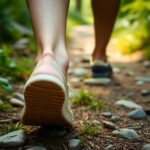
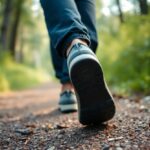
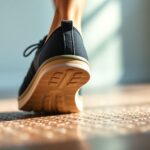
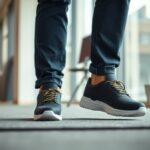
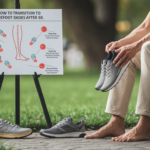
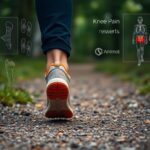

I appreciate your emphasis on the gradual transition to barefoot shoes like Xero Shoes. It’s reminiscent of when I first switched from traditional running shoes to minimalist footwear; I realized how much my foot strength and natural gait improved over time. This conscious shift not only fostered a deeper connection with the ground but also changed my approach to overall fitness.
Your exploration of Xero Shoes and the concept of barefoot footwear sparks an interesting dialogue about our relationship with the ground beneath us. I’ve recently made the transition to minimalist shoes, and I can wholeheartedly agree with your point about easing into it. It’s almost akin to learning a new sport; starting slow allows us to not only build the necessary muscle strength but also to listen to our bodies as they adapt.
The journey into minimalist shoes really does mirror the experience of picking up a new sport. Each step feels like a fresh adventure, and you start to become acutely aware of how much our feet can communicate with us. Transitioning to barefoot footwear isn’t just about choosing a different shoe; it invites us to rethink how we connect with the earth.
I appreciate how you’ve framed the transition to barefoot shoes as akin to training wheels for the feet. It’s such an important perspective, especially when many people jump in too quickly without understanding the potential adjustments their bodies need to make. I had a similar experience when I first transitioned to minimalist footwear—it took time, but gradually I noticed how much more connected I felt to the ground and my own movements.
The concept of transitioning to barefoot shoes really resonates with me, especially the idea of treating it like training wheels for your feet. I remember when I first made the switch to minimalist footwear; it felt strange at first, but gradually, my feet and legs adapted, and I could feel the difference in my posture and overall comfort.
I appreciate how you framed the transition to barefoot shoes as a sort of training wheels for our feet. It’s such a crucial point! I think many people underestimate the impact that traditional cushioned footwear has on our natural movement patterns.
Your exploration of barefoot shoes, particularly the emphasis on Xero Shoes, resonates deeply with my own experiences in redefining what comfort and connection with the ground mean for my body. When I first transitioned to minimalist footwear, the approach of taking baby steps—both literally and figuratively—was crucial. The analogy of “training wheels for your feet” is spot on; I found myself gradually acclimating over weeks, starting with short walks to build up the necessary strength and flexibility in my muscles and tendons.
This is a fascinating introduction to the world of barefoot shoes and the role Xero Shoes can play in that transition. I’ve been curious about minimalist footwear for a while, especially after hearing about how they can promote better posture and alignment. I appreciate your emphasis on a gradual transition—it’s something I learned the hard way during my own shift to a more minimalist approach. I started with short walks and slowly increased my distance, which has really helped my feet adapt rather than forcing them into a sudden change.
I love the analogy of “training wheels for your feet”! It’s so true – my first couple of runs in a pair of minimalist shoes felt like I was learning to walk all over again. I half expected to have my mom chasing after me with a set of elbow pads!
Your insights into the journey of transitioning to barefoot shoes, specifically Xero Shoes, resonate deeply with my own experience. It’s fascinating how the paradigm of footwear has shifted in recent years, emphasizing not just comfort but also functionality and connection to our natural movement patterns. When I first ventured into minimalist footwear, I approached it much like you suggested—gradually.
I’ve always been intrigued by the concept of barefoot shoes, especially how they encourage a return to natural movement. I started my own journey with minimalist footwear a few months ago, and I can definitely relate to the importance of transitioning gradually. At first, it felt a bit strange—like my feet were awakening from a long slumber!